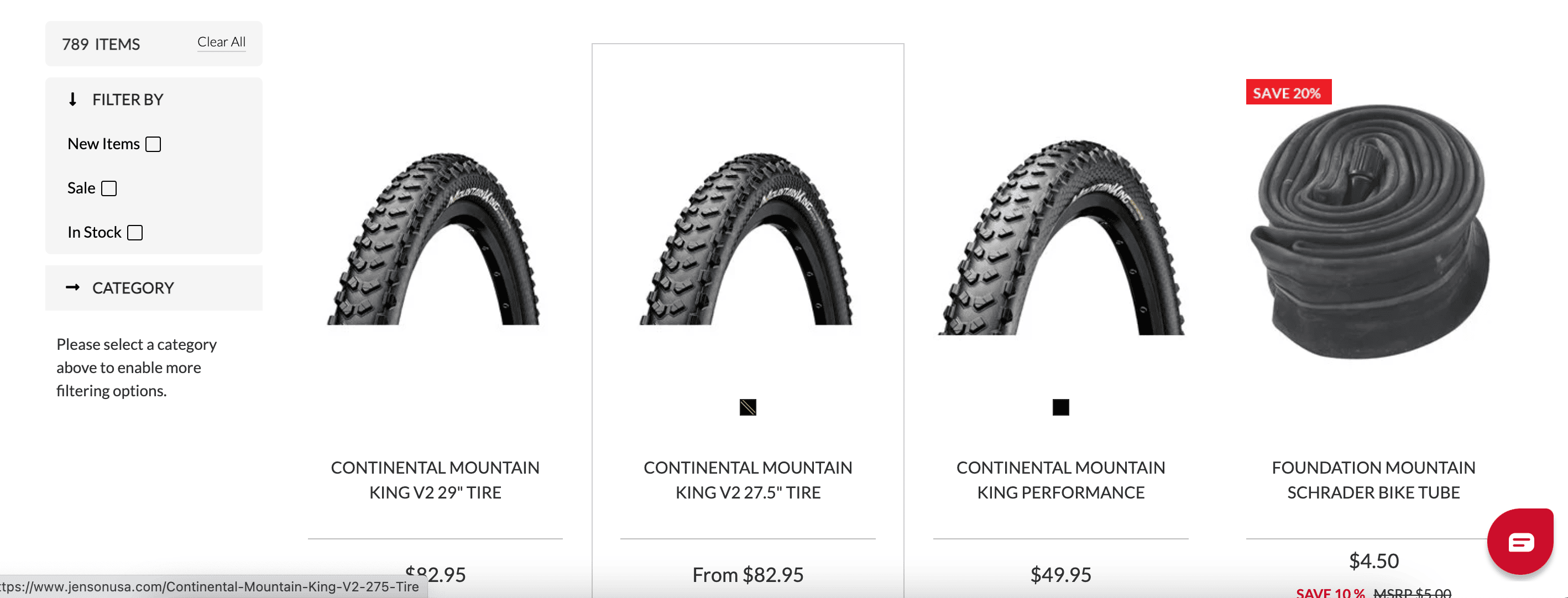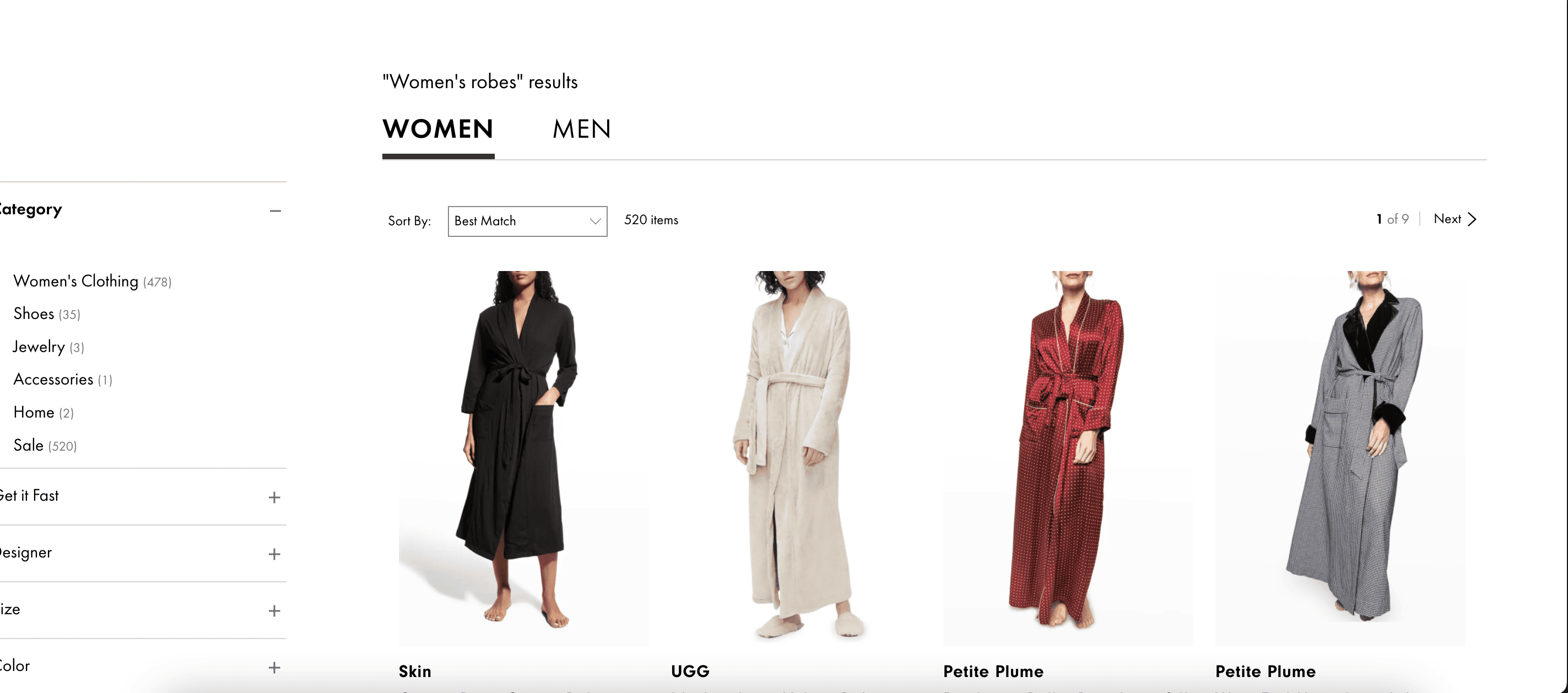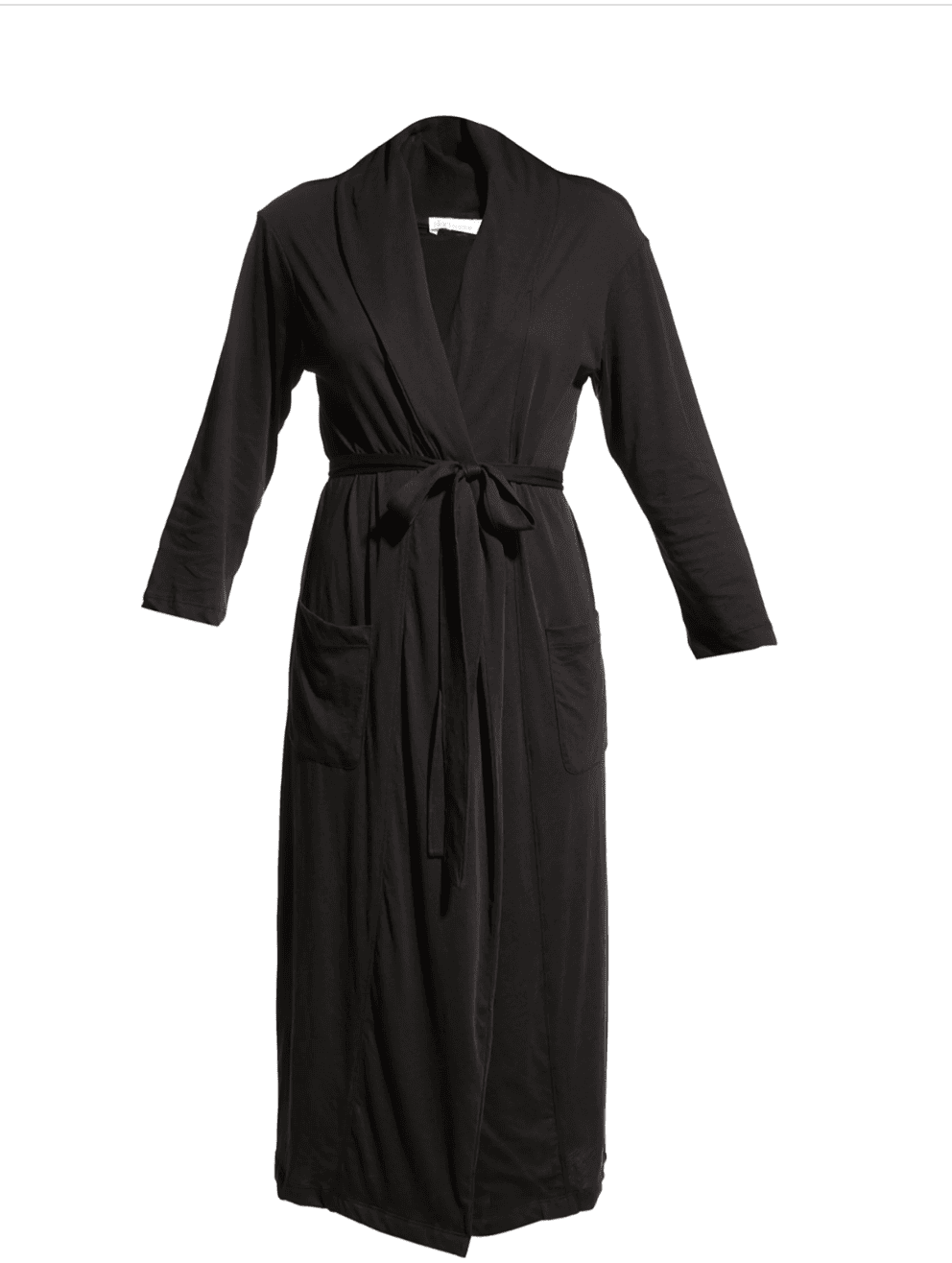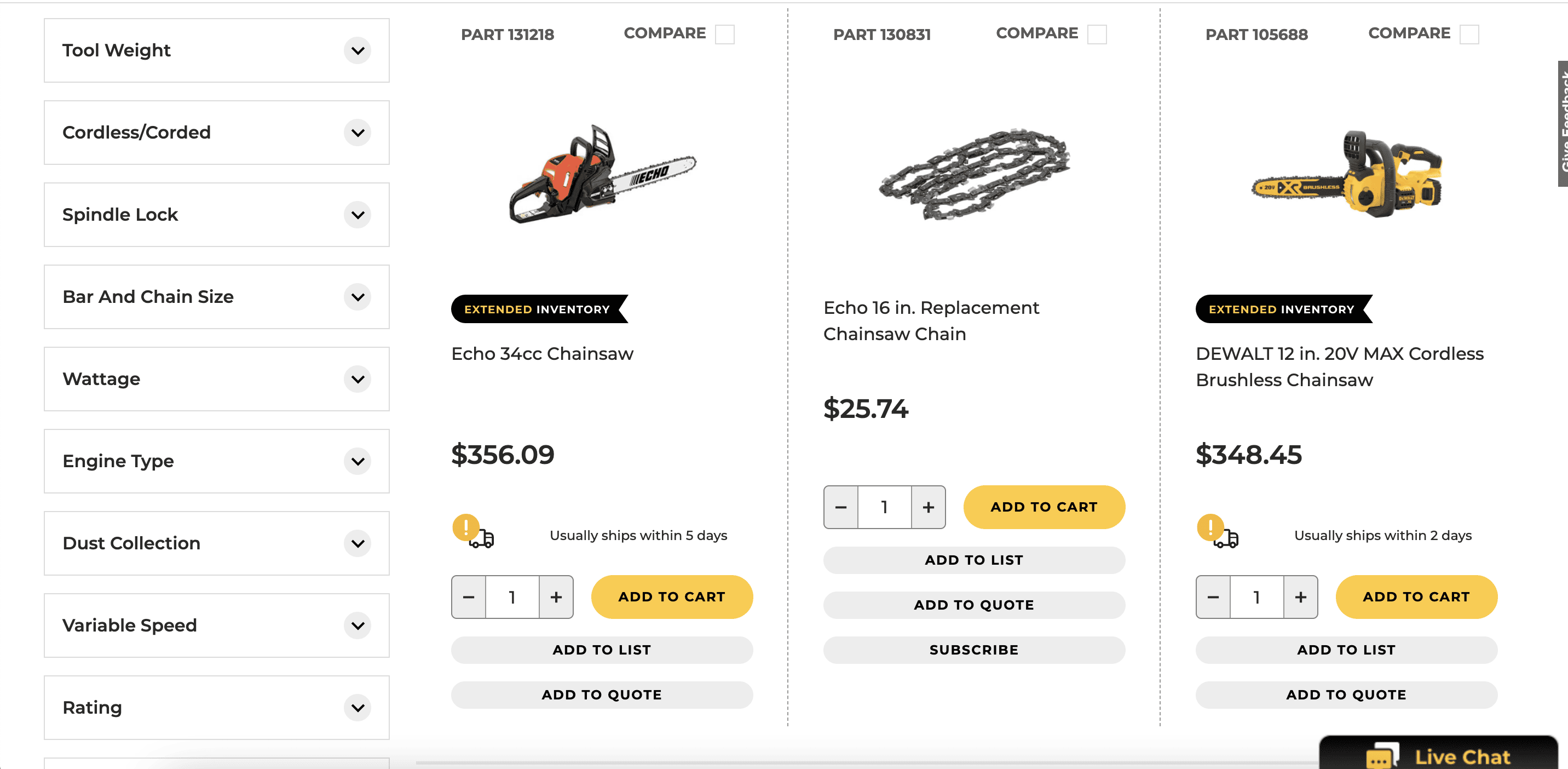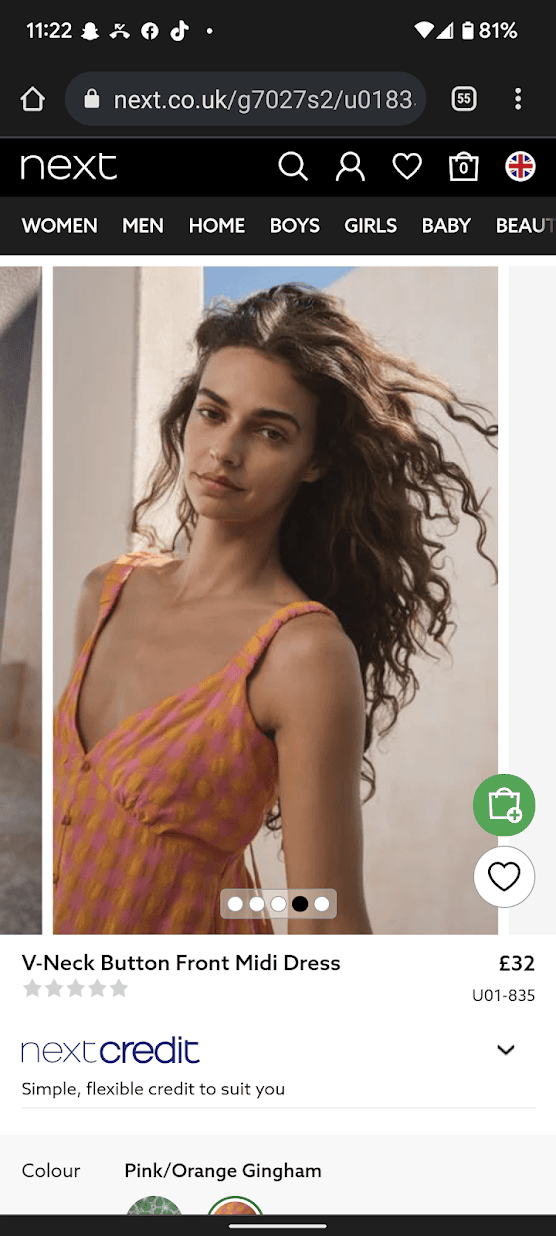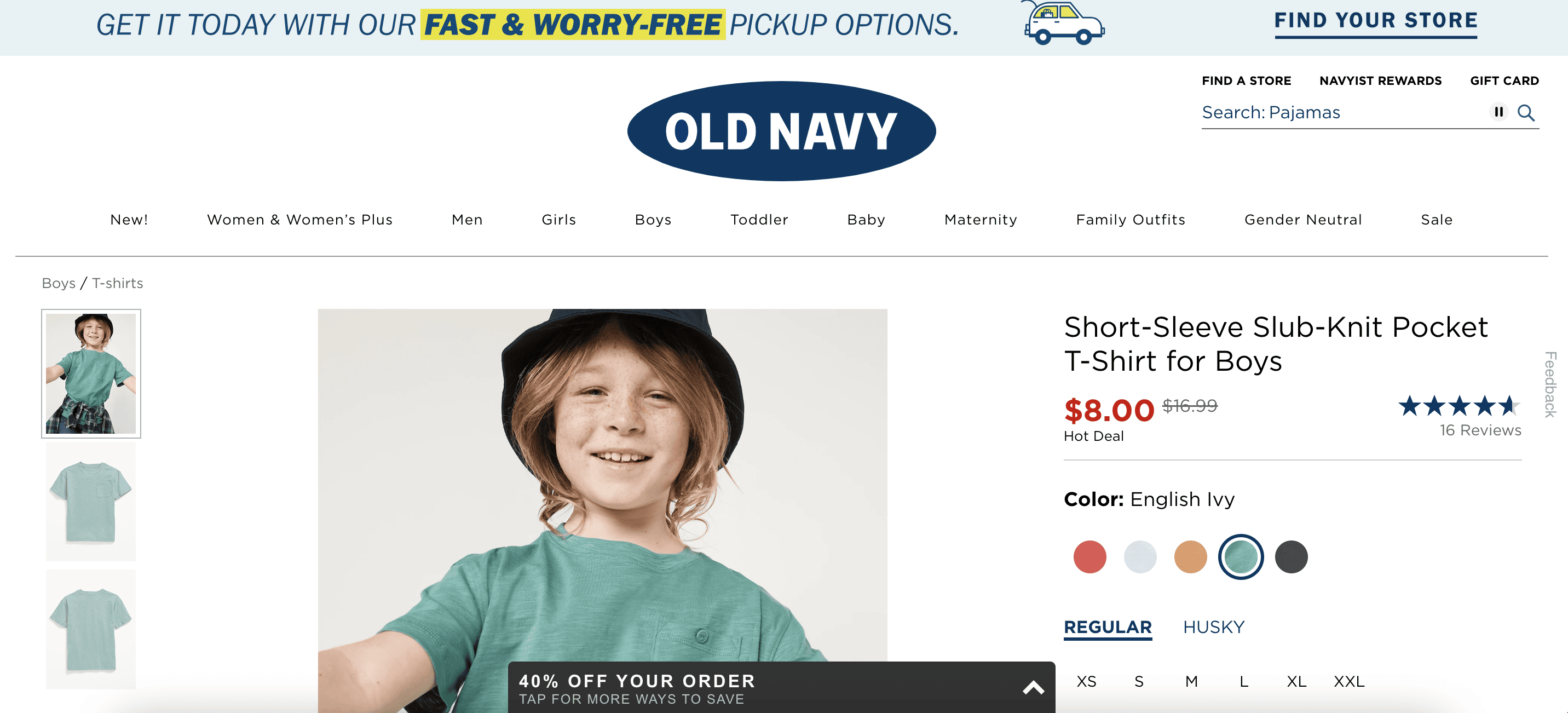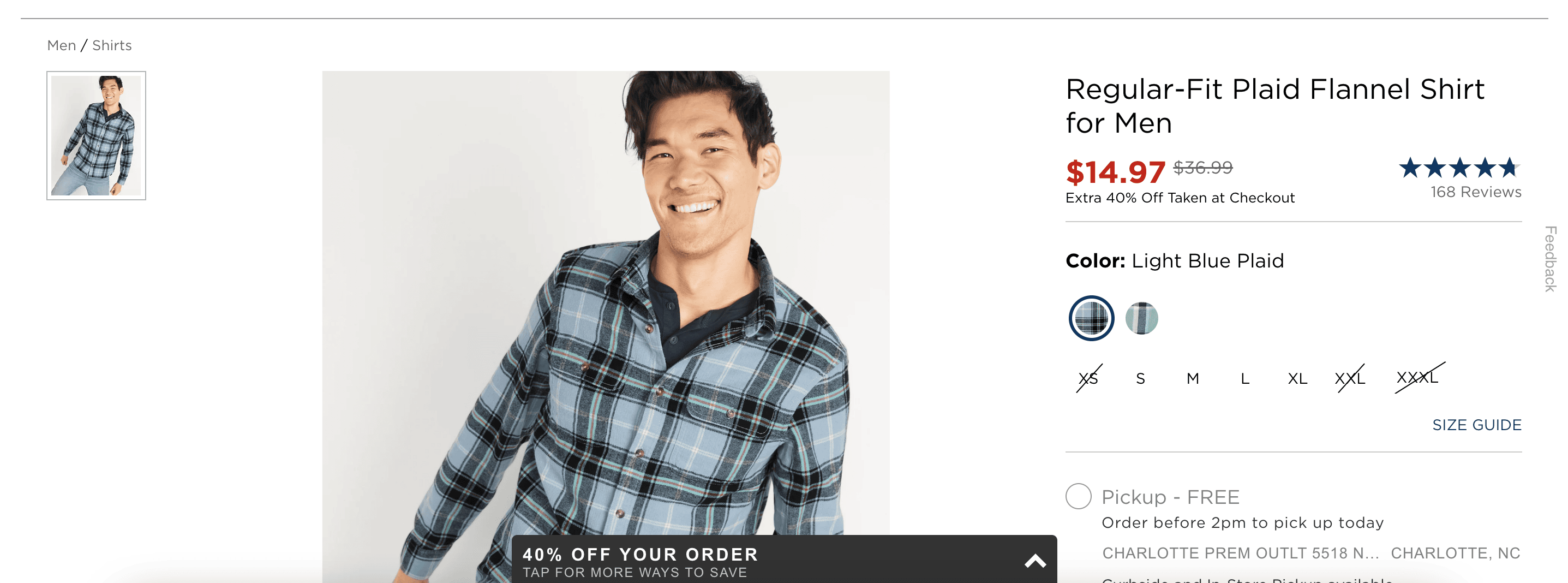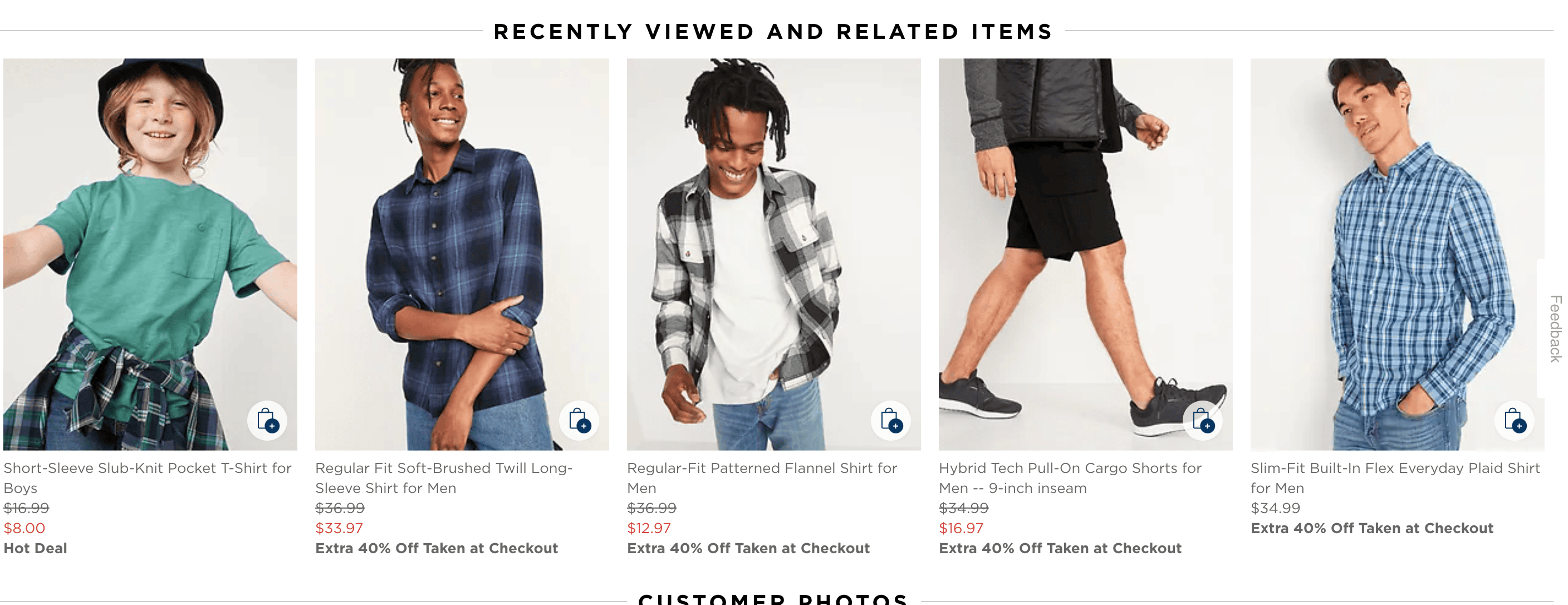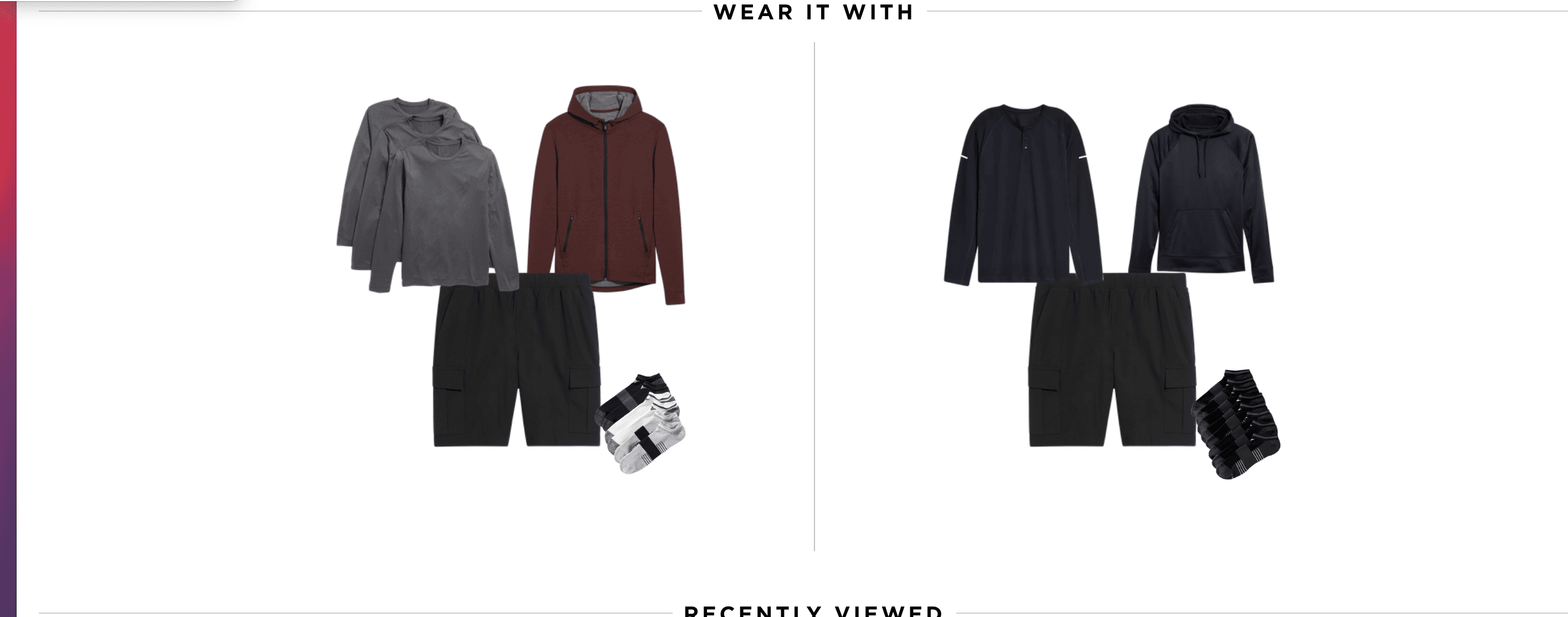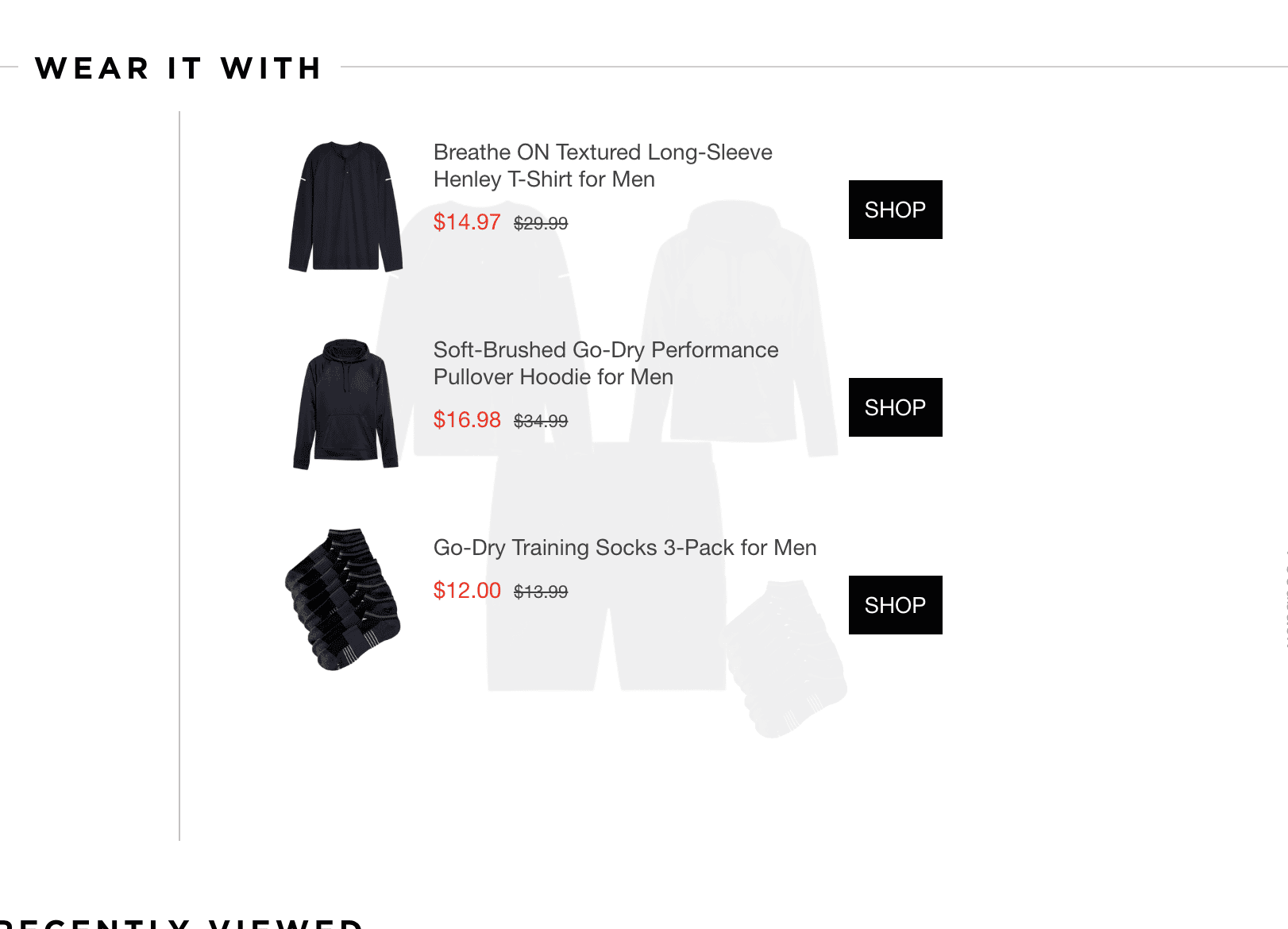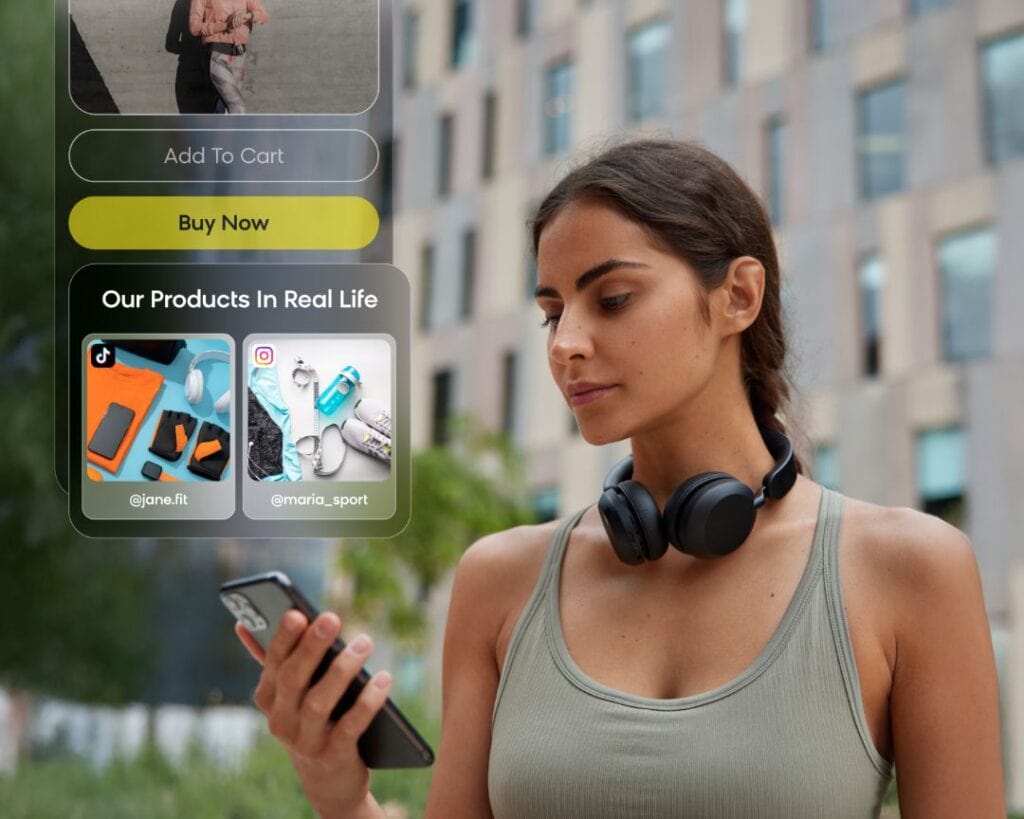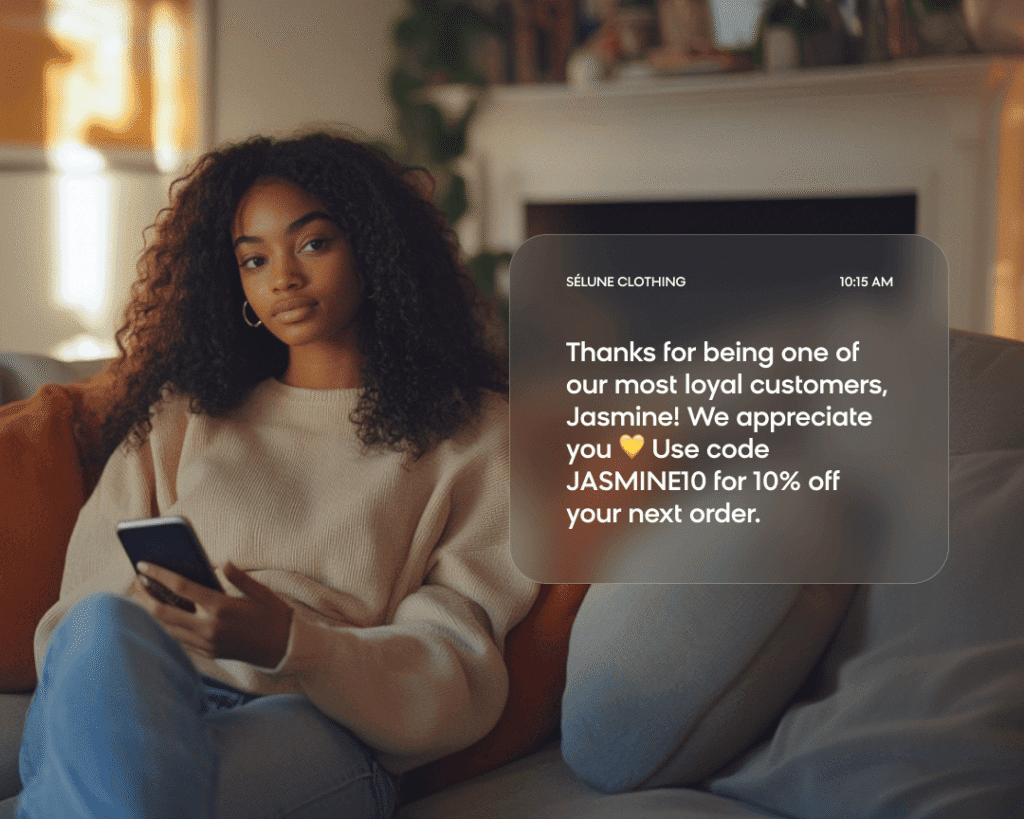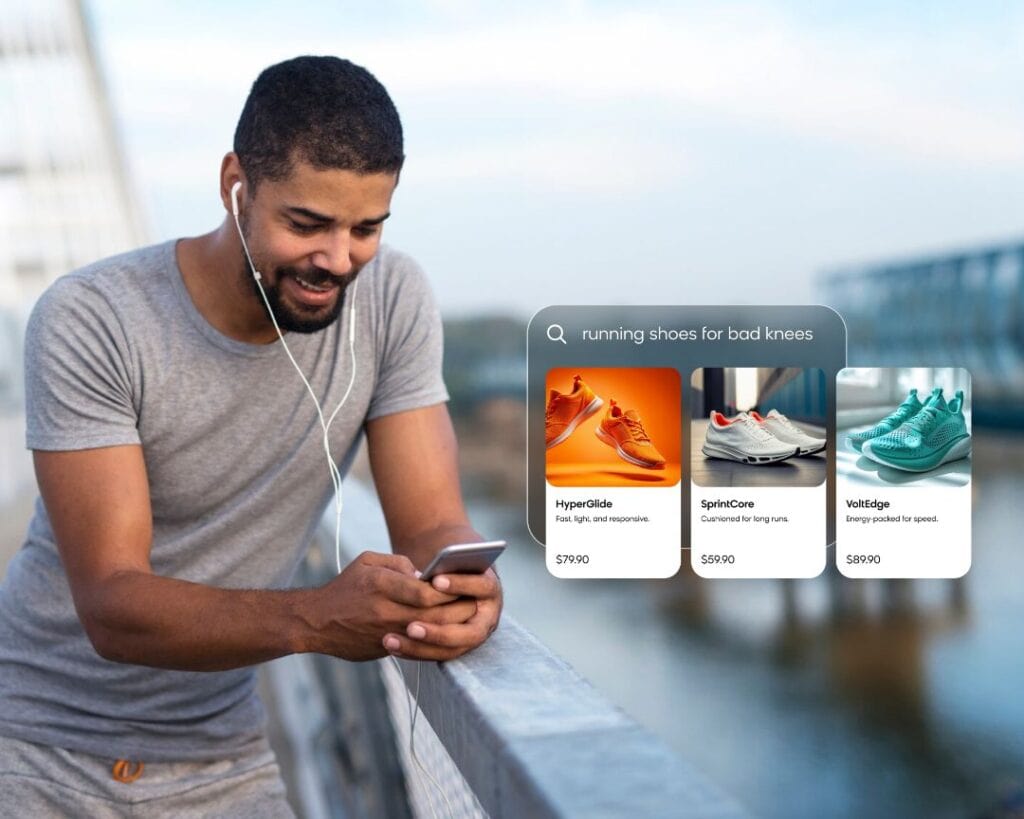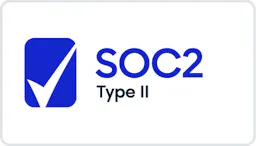Semantic search is the lifeblood for many ecommerce businesses in today’s market. This is because buyers expect easy navigation, personalized search results, and tailored search experiences that remember their preferences and rerank products accordingly, especially for in-session browsing.
In short, users have high expectations of their search engines in today’s highly competitive digital commerce market.
But as BigCommerce notes, 72% of ecommerce sites fail to deliver on consumer site search expectations. The brands that are succeeding are leveraging personalized site search functionalities to enhance the customer experience, therefore increasing retention.
While retention and revenue may be your internal KPIs, the only way to compete on experience with brands like the ones discussed in this article is by putting the customer first. So what are those site search functionalities that enable search personalization excellence?
We wanted to find out for ourselves, so we went to the experts at Bloomreach. Being self proclaimed “site search nerds”, we asked them to describe their favorite brands that they’ve had positive online shopping experiences with, specifically regarding the search bar returning an outstanding personalized experience. After all, when you work on the world’s #1 Commerce Experience Cloud, you recognize (and geek out on) good site search when you experience it.
Let’s dive in and learn from the best brands serving consumers with intentional, positive experiences.
Jenson USA Excels With Personalized Search
Jenson USA is a leading online bicycle retailer. It’s independent, rider-owned and sells bike, bike parts, apparels, accessories, and more.
How Jenson USA is Crushing It
With the goal of its customers finding everything they needed in one place, Jenson USA invested a significant amount of effort in improving its personalized search experience that was intuitive enough to account for the various cycling styles.
Jenson’s personalized search experience is designed to delight. Organizing products by customers’ known preferences on the page in front of them creates a relevant and consistent experience that has proven to secure brand loyalty. That moved the company away from data analyses and unscalable personalization and got it looking at two key segments of customers — mountain bikers and road bikers.
Jenson’s customer segmentation updates based on in-session behavior and integrates with its search provider to best optimize results for end users. This gives the Jenson team a deeper understanding of who is actually visiting the website.
Putting Jenson USA to the Test
Bloomreach tested Jenson USA’s work with personalized search, and….it passed with flying colors.
We set our experience on the site up as if we were interested in mountain biking. Our search for “bike tires” returned all mountain biking tires that would be perfect for a trip up our local mountain.
After making the site think we should be characterized in the road biker segment, you guessed it, road biking tires were returned upon searching “bike tires”.
Mountain bikers and road bikers now have a path to a seamless customer journey with Jenson USA thanks to personalized search capabilities.
What You Can Learn from Jenson USA
What are your key groups of customers? Can they be segmented like Jenson USA did?
Personalizing web search results allows companies to unlock magical customer experiences that foster customer loyalty online through artificial intelligence. It is an ecommerce personalization tactic that drives revenue and builds brand loyalty.
How much revenue? Jenson USA increased revenue per visitor (RPV) 8.5% with personalized search.
What impact would it have on your business if you stopped showing products to a particular user that they weren’t interested in?
Neiman Marcus’ Same-Day Delivery Saves the Day
Neiman Marcus is an American chain of luxury department stores with a digital commerce presence that is headquartered in Dallas, Texas.
How Neiman Marcus is Crushing It
Same-day delivery saved the day for a Bloomreach employee shopping for a last-minute birthday gift for her mother.
In search of the perfect robe, we had an employee use the search bar to search for women’s robes, filtered by price, as well as what was available for local pickup and/or delivery. To her astonishment and joy, she found the perfect last minute gift that could be delivered to her house that day — in time to give it to her mother for her birthday.
Let’s compare this with an unnamed competitor of Neiman Marcus, that actually had a brick-and-mortar location closer to the home of our original shopper. The competitor’s web pages were actually where our shopper started her search for robes because she figured she would need to buy the robe online and pick it up in-store because of her time crunch.
A search for “robes” brought back results that featured mostly pajamas, but our shopper finally found a reasonably priced robe that would be perfect for her mother.
That is, until it was discovered that the size filter didn’t work and the product she wanted was actually out of stock in the necessary size. She selected another robe, only to make it all the way to online check out before learning the same thing — the product was not actually in stock in the right size.
Three strikes, and the competitor was out. The shopper used the same search query with Neiman Marcus and quickly found the perfect product. Neiman Marcus and its same-day delivery were an obvious winner here in our impromptu “find a robe quickly” shopper test.
Putting Neiman Marcus To The Test
Would that experience be duplicated when we put it to the test again?
It sure would.
Not only was home delivery and pickup an option again, both were very reasonably timed so the product could be received in a timely manner. Sizes were in stock for the selected robe and it was easy to get an idea of what the product would look like when the customer would have it in hand because of the high quality images on the product listing page.
What You Can Learn From Neiman Marcus
The search bar made it easy to shop for the exact product that was top of mind (and in time) for the customer at Neiman Marcus. Can your search bar facilitate the same experience? Can your company “save the day” with same day delivery or BOPIS options?
The winning play here is a search engine that makes the customer experience seamless from product discovery to product purchase.
HD Supply Ensures Search Results are Relevant for Each Segment of Shoppers
HD Supply is an industrial distributor in North America. The company provides a broad range of products and value-added services to customers in maintenance, repair and operations, infrastructure, and speciality construction sectors.
How HD Supply is Crushing It
With relevance by segment. Similar to Jenson USA, HD Supply is using machine learning to rank search results based on segment data to best serve customers who are grouped into different segments and have different customer experiences with the brand. This has led to a better end user experience for digital seekers.
What does that exactly mean? Take a search for “gloves”, for example. At HD Supply, that customer intent could go a variety of ways. If consumers had past search history for medical products, the gloves query may produce search results for latex gloves. If they had previously engaged with building materials, construction gloves would have been the first search result.
Relevance by segment helps ensure that relevant results are shown to the end user and that they are as personalized as possible. This relevance is what facilitates customer retention and brand loyalty for searching users.
Putting HD Supply To The Test
HD Supply is also great at merchandising its site. We found this out firsthand.
Our search for “chainsaw” is a fairly obvious one in terms of customer search intent. There aren’t many terms that can get confused with chainsaw.
However, HD Supply was predictive with this search and returned a relevant result in more ways than one. It of course returned chainsaws, but also returned a replacement chainsaw chain, as it understands that that product is one of its highest grossing products for consumers who already own the chainsaw.
This is because when customers need to replace the chain on the chainsaw, they aren’t buying an entirely new chainsaw, they’re just buying the chain. Another example of how searching a specific query can lead to conversion by putting the right products in front of customers with a need.
What You Can Learn from HD Supply
Understand your customers, and show them what they want. It sounds simple, but it can be far from it without the right site search capabilities.
Relevance by segment lets companies collect data about the different segments of users on your site and then use that data to optimize the product ranking based on preferences of all the users within a specific segment. It eliminates the need to constantly have to be writing manual rules for your search bar.
The big lesson here? Automatic > manual. An obvious statement, perhaps. But leaning into artificial intelligence to improve personalized search rather than writing manual rules is an obvious win as it saves your team time.
Next Goes Small and Wins Big
Next Group is a retailer whose purpose is to offer beautifully designed, excellent quality clothing, homeware, and beauty products which are responsibly sourced and accessibly priced.
How Next is Crushing It
Thinking big by going small.
Next is creating a superior shopping experience with small screen sizes. It has figured out how customers are accessing its website and products and has leaned in to ensure that the product experience it is offering on mobile devices is equally as outstanding as it is on desktop.
One great example of this? The add-to-bag icon on the product image.
When the product detail page loads, it offers an animation to showcase to customers that this product can be added to their cart with a simple press of the icon. Whereas most sites just offer the traditional add-to-cart functionality, Next goes above and beyond to make the customer experience more seamless with this icon.
For users scrolling through on mobile, the button is conveniently located for an easy click with their right thumb. This makes the shopping experience very easy while you’re on the go or trying to find the perfect item while you are multitasking on your phone.
Putting Next To The Test
Next is also emphasizing how popular styles are by telling the customer how many of this same item were purchased in the last 24 hours or showing how many of the particular item being searched for are left in stock. Most sites will showcase trending now and top sellers but this is taking it a step further.
Similar to the add to cart icon, Next is going all in with speed and convenience by notifying customers how many times the item they are looking at has been purchased recently. It helps create a sense of urgency amongst buyers and it helps reassure them that the product they are looking at is popular and in demand.
The biggest benefit to shoppers? They know the item is in high demand and is also in stock, depending on which message is showcased to them.
What You Can Learn From Next
Meet your customers where they are so they are most comfortable shopping with your brands.
The numbers are clear for many companies across the world — the future is mobile. Mobile commerce sales nearly doubled from 2018 to 2021. This should be a wakeup call to any company who has not invested in making its search bar experience a good one on mobile. The time is now.
Old Navy’s Suggested, Scrolling Search
Old Navy is an American clothing and accessories retailing company owned by multinational corporation Gap Inc.
How Old Navy is Crushing It
Suggested, scrolling search.
What exactly is that? Well, it’s precisely what it sounds like. Old Navy’s search bar makes search suggestions (based on its own top queries) that help consumers get the ball rolling with search on the website. The movement of the non-traditional scroll catches the attention of the customers and moves their eyes to the search bar, which then of course prompts them to use it for the product they are looking for. A brilliant idea that facilitates the search process.
When you value every consumer touchpoint, you’re constantly testing and learning to ensure that what you’re offering is the best it can possibly be. Tiny tweaks to the experience such as moving the search bar around is what Old Navy is focused on to optimize the customer experience.
Below you’ll notice the search bar on the upper right (with the suggested scrolling search). A unique and attention-grabbing placement to ensure that customers don’t miss it during their scroll of the page.
Old Navy is also providing customers the ability to complete their outfit on a product detail with creative merchandising. Rather than just immediately moving customers to checkout, Old Navy is offering a “wear it with” experience on product detail pages that helps customers view recently viewed and related items.
Putting Old Navy To The Test
Let’s put that recently viewed and related items section to the test and see if we can put together an outfit for a casual night out, shall we?
Starting with a search for “flannel shirts” that was suggested by Old Navy, we found this piece that is perfect for a night out with friends.
But what to wear with it? Don’t worry, Old Navy was on top of it with the perfect shorts suggestion.
Clicking on the “hybrid tech pull-on cargo shorts for men” brings up a product page similar to the flannel shirt. But on top of the typical product page, it offers “wear it with” product recommendations that allow us to complete our outfit for the evening out.
Hovering over the products provides more details and information on how to add them to your cart.
Just like an in-store experience that offers in-person browsing options, Old Navy can offer a merchandising experience so shoppers can purchase an entire outfit with just a few clicks.
What You Can Learn From Old Navy
Old Navy has constructed how it wants the customer journey online to look — and it starts with suggestive scrolling search in the search bar.
The lesson here? Marry artificial intelligence with personalized search to make experiences seamless for your customers.
The Importance of Personalized Search Results
By now, you know full well how important site search and the ability to personalize search results is in digital commerce. Without it, it wouldn’t be any more convenient to shop online than it would to wander around your local brick-and-mortar store looking for products.
Winning with site search isn’t just about returning search results though — it’s about returning relevant and personalized search results. Fulfilling customer needs and intent with search is what increases retention and inspires brand loyalty, not just returning results aimlessly.
Brands like Jenson USA, Next, and Old Navy have figured out personalized search and how to make their customers happy with it. What are the steps that your company has to take with personalized search to do the same?
If you’re not sure — check out our ROI calculator to learn more. Many search engines may not be transparent about how much revenue they actually can help you drive from a user’s search query or why personalizing search results is so important financially to your business.
Our ROI calculator will use a few key metrics from your brand to help you understand how your search algorithm is impacting your bottom line and offer suggestions on how to improve your brand’s personalized site search — a sure-fire way to unlock substantial revenue growth. Check out our ROI calculator and start better understanding the impact that investing more into personalized search can have on your business.


